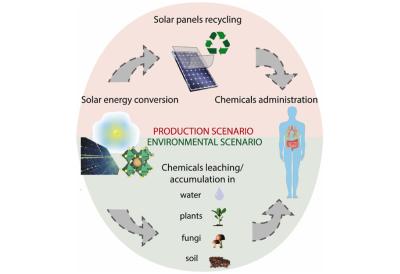Perovskite-Info weekly newsletter
Published: Tue, 03/07/23
The Perovskite-Info newsletter (March 7, 2023)
Cannot read this? View it online here
Researchers show that channeling ions into defined pathways can improve the stability and performance of perovskite solar cells
Researchers from North Carolina State University, Pennsylvania State University and University of North Carolina at Chapel Hill have found that channeling ions into defined pathways in perovskite materials improves the stability and operational performance of perovskite solar cells.
The team's recent study presented a multiscale diffusion framework that describes vacancy-mediated halide diffusion in polycrystalline metal halide perovskites, differentiating fast grain boundary diffusivity from volume diffusivity that is two to four orders of magnitude slower.
Researchers use alkylammonium chlorides to control growth of perovskite layers and achieve 26.08% efficiency PSC
Researchers at South Korea’s Ulsan National Institute of Science and Technology (UNIST), Chonnam National University and Pohang University of Science and Technology (POSTECH) have developed a unique perovskite solar cell that uses alkylammonium chloride (RACI) to control the formation of defects in the perovskite layer.
The US National Renewable Energy Laboratory (NREL) has certified the South Korean research team's cell's 25.73% efficiency. The champion device built by the scientists reached an efficiency of 26.08%.
Researchers examine the role of surface texturing in perovskite-silicon tandem cells
Nano-textured surfaces are an interesting approach for optimizing the optical characteristics for monolithic perovskite/silicon tandem solar cells. Scientists from Germany’s Helmholtz-Zentrum Berlin (HZB) have examined the development of different textures of silicon surfaces using various commercial additives and their performance in silicon heterojunction (SHJ) and SHJ–perovskite tandem solar cells.
The team performed optical and electrical characterization and found that nano-textured surfaces can compete with standard textured surfaces, yielding higher average efficiencies in single junctions. In addition, their compatibility with solution-processed perovskite top cells was demonstrated in the recent study, yielding a perovskite/silicon tandem solar cell efficiency of >28% on a bottom cell with nano-texture on both sides.
Researchers examine perovskite solar cells' toxicity and suggest risks may be overestimated
Scientists from Skoltech (Skolkovo Institute of Science and Technology), Research Centre for Medical Genetics, Federal Research Center of Problems of Chemical Physics and Medicinal Chemistry and Zhengzhou Research Institute of HIT have studied the toxicity of materials used in perovskite solar cells.
They concluded that once the remaining technological hurdles are overcome, mass production of this potentially cheap and efficient alternative to silicon-based photovoltaics should not cause any significant environmental risks and health hazards. The study draws attention to perovskite components other than lead, suggesting that metal's toxicity, by comparison, could be overestimated.
Metalgrass LTD
9 Har Tsin St.
Kfar Sava Hasharon 4430809
ISRAEL
Unsubscribe | Change Subscriber Options






